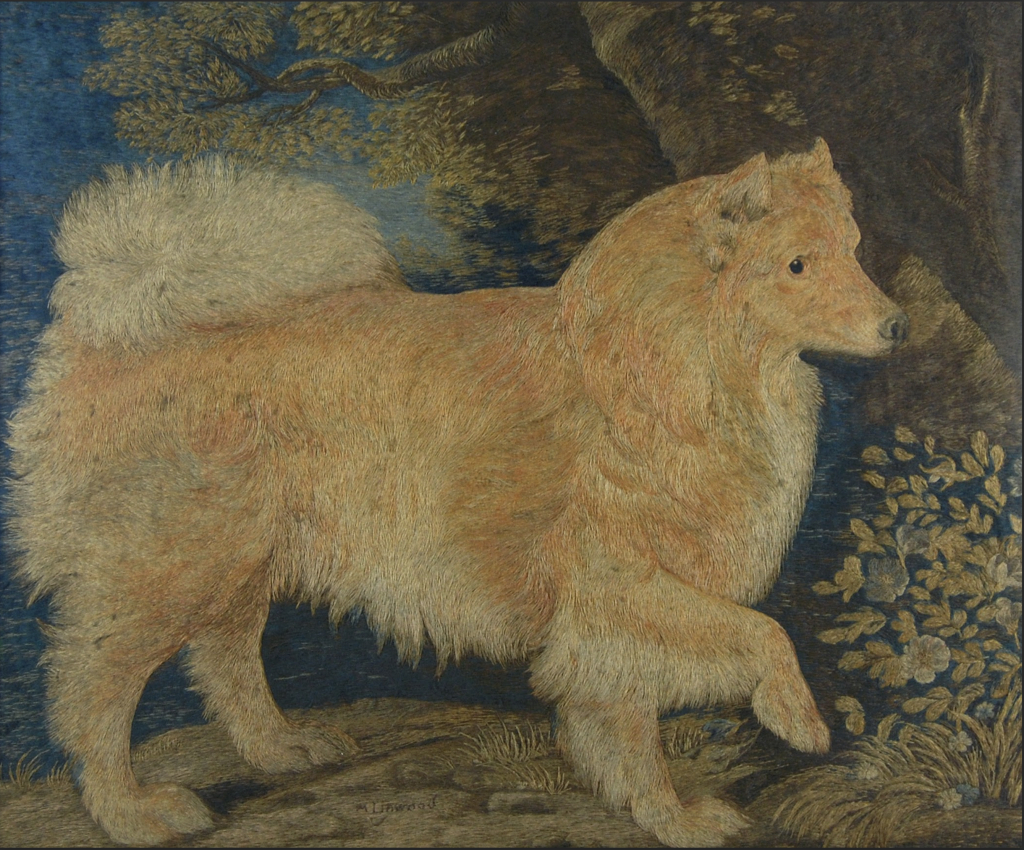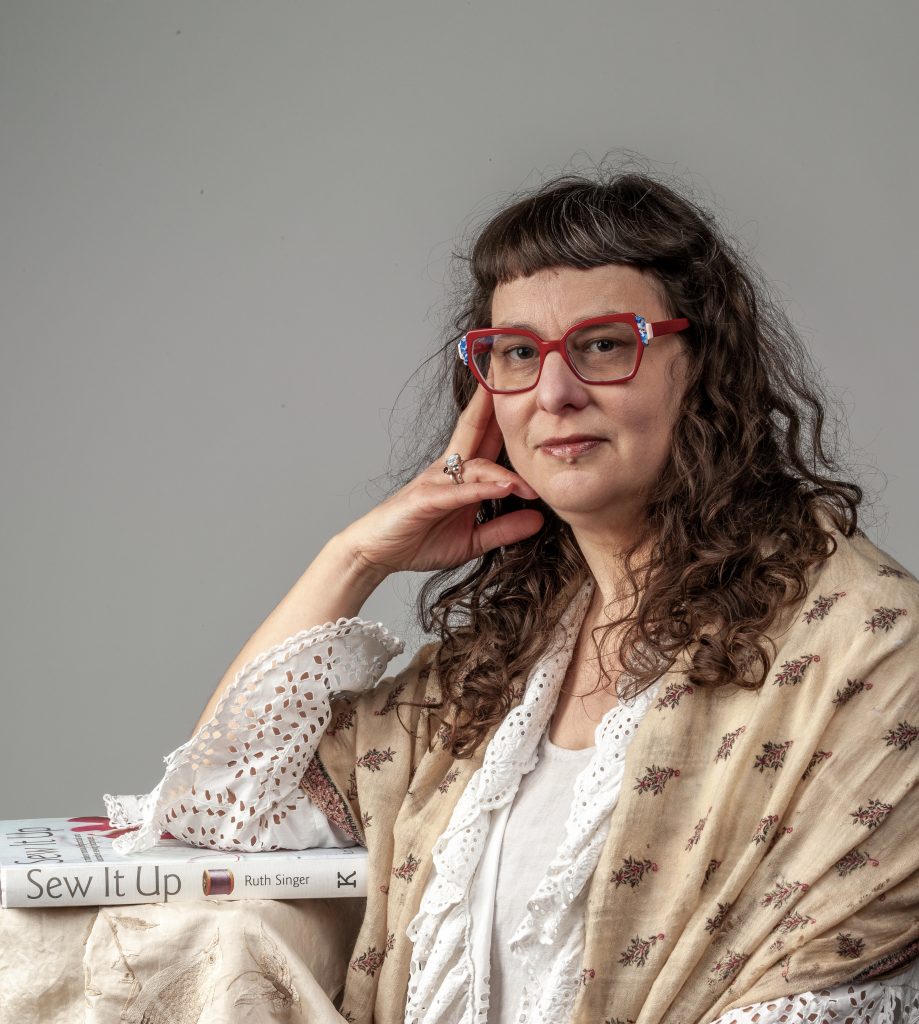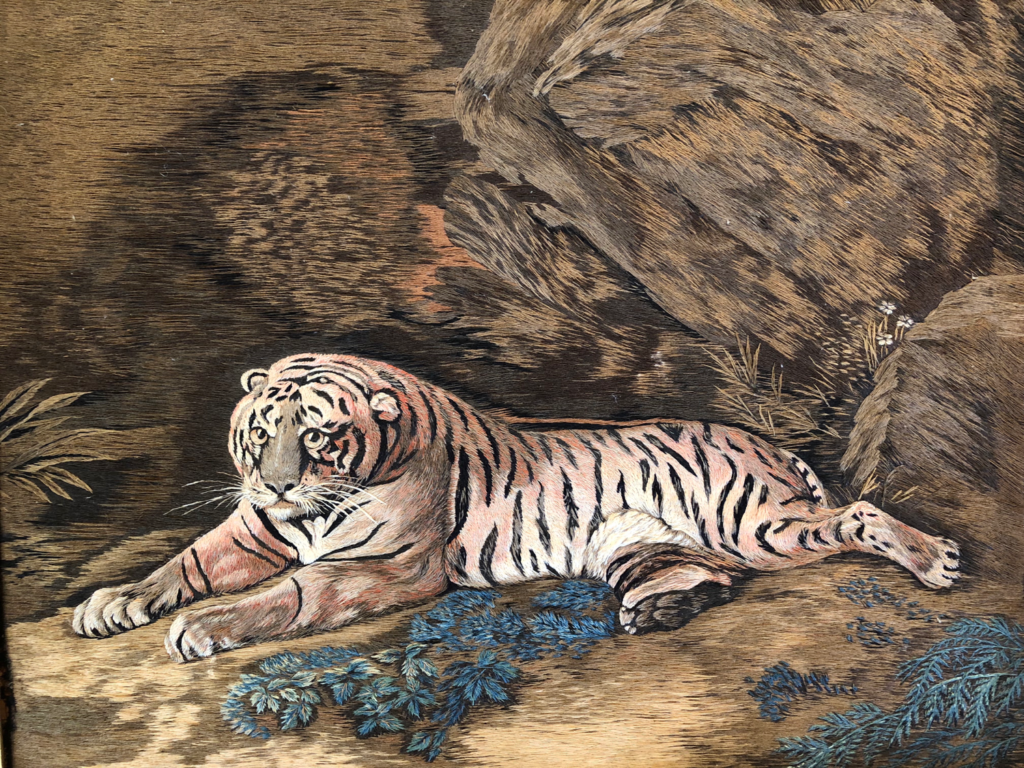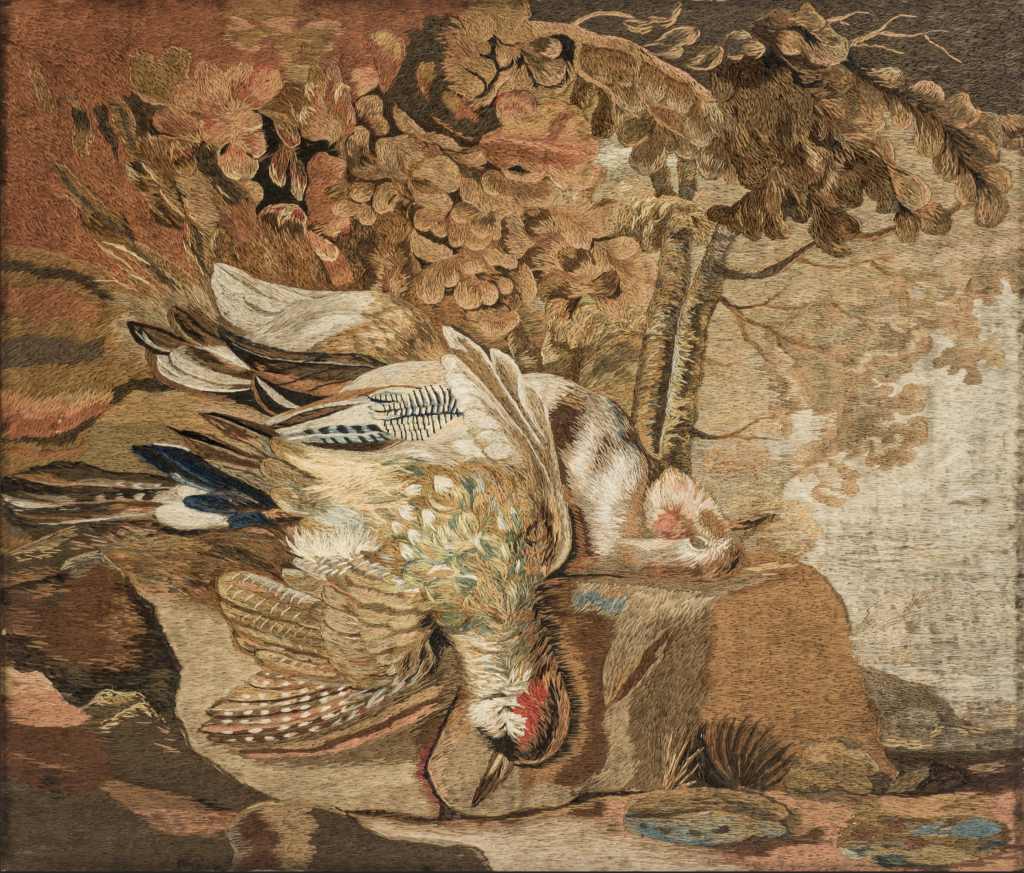Once one of the most celebrated artists of her time, Mary Linwood is a name that today rings unfamiliar to most — even in her hometown of Leicester.
But this is beginning to change. An upcoming exhibition, the first in nearly 80 years to bring together a significant collection of her work, is shedding new light on this pioneering figure in British art and textile history.

Self portrait by Mary Linwood
A Trailblazer in Stitches
Mary Linwood was no ordinary embroiderer. Working in a style that mimicked oil painting with thread, she created large-scale, incredibly detailed works that left 18th- and 19th-century audiences in awe. Her needlework wasn’t a domestic pastime—it was a full-scale art form. Though her technique involved recreating famous paintings in embroidery, this was not seen as imitation but as innovation. At the time, translating masterworks into textiles was viewed as both technically impressive and culturally valuable.

“She was internationally famous,” explains Ruth Singer, the exhibition’s curator, who is also a textile artist in Leicester. “She was a big deal in her day.”
A Leicester Legend, Hidden in Plain Sight
Though born in Birmingham in 1755, Linwood spent most of her life in Leicester. She ran a well-regarded boarding school for girls—originally founded by her mother—while simultaneously creating her art and managing her gallery in London. Despite her national and even royal recognition (Queen Charlotte was a fan), Linwood’s legacy has faded, particularly in the city she called home.
“There’s quite a lot of her work in Leicester Museums—14 pieces—but they’re rarely on display due to the fragility of textiles and the risk of light damage,” says Ruth. “They haven’t all been shown together since 1951.”

Picture: Ruth Singer
Perhaps Mary’s most extraordinary achievement was opening and running her own gallery in London—an unheard-of feat for a woman at the time. Not only was she the first woman in Britain to own and operate an art gallery, but she did so for decades, exhibiting only her own embroidered masterpieces. The gallery became one of London’s most talked-about sights, drawing crowds and acclaim.
Rather than selling her work, Linwood earned money through ticket sales—a clever model that ultimately left her with a sizeable fortune. When she passed away just shy of her 90th birthday, she left the modern-day equivalent of several million pounds to her nieces and nephews.
An Artist Without Heirs, A Legacy Fading
Linwood never married and had no children, which may partly explain the eclipse of her legacy. “I think that is part of why she’s been forgotten,” reflects the curator. “There’s whole generations who’ve not really seen her work.”

But interest is growing again. Linwood is beginning to appear in new exhibitions, and academic research—including a recent book by an American art historian—is reviving her reputation.
Linwood’s story is remarkable not just for her art, but for her life. She balanced her time between running a school, creating her vast body of work, managing a gallery, and supporting charitable causes—especially in Leicester’s civic life. She was entrepreneurial, independent, and fiercely dedicated to making British art more accessible to the public, particularly women.
“She was fearless. She had a clear purpose,” the curator adds. “She wanted British painters and British art to be seen by more people. Her embroidery was a patriotic act.”
Seeing Is Believing
There is something powerful about seeing Linwood’s work in person. From a distance, it looks like a painting; up close, the intricate stitches reveal themselves, each thread a testament to her meticulous craft and vision.
It’s a style that, though admired in its time, did not carry forward—making her surviving pieces even more rare and valuable.
“This exhibition is emotional for me,” says the curator. “She shouldn’t be forgotten. She was important in her day, and she’s still significant for textile artists now.”

Mary Linwood’s legacy is not just in the stitches she left behind, but in the path she carved for women in the arts. As the first textile artist to achieve fame and respect in Britain, her story is one of innovation, resilience, and quiet revolution.
This long-overdue exhibition is more than a tribute—it’s a restoration of a woman to her rightful place in art history.
The exhibition ‘Rediscovering Mary Linwood’ will take place at Leicester Museum and Art Gallery between September 13 and January 15.
For more information, visit: www.ruthsinger.com/mary-linwood





